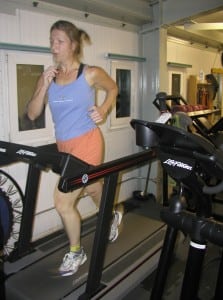
When you start to look into the details of how men and women squat differently, the answer is pretty complex. It isn’t that one gender squats a certain way, and the other doesn’t. Instead, it depends on several factors that differ from person to person. Men and women have different anatomy, which impacts how they squat. There are also cultural expectations of what it means to be masculine or feminine that affect the way we move our bodies. Even biology plays a role in how we approach the squatting movement pattern as men and women. Without further ado, here are some things you need to know about how men and women squat differently:
You Squat Funny!
It was great to come across this article that just looked at common leg exercises and how they differ in men and women.
What They Looked At:
They looked at the kinematics (movement) and muscle activation levels of males and females during three closed chained rehabilitation exercises (single-leg squat, lunge, and step-up-and-over) in subjects who were not injured and had varying activity levels.
Cool Stuff in the Paper:
- There is evidence that females and males have different landing and cutting kinematics.
- Females have more significant knee valgus and knee extension angles during landing.
- Females have more significant hip internal rotation and extension angles during side-step cutting.
- There are delays in muscle activation in gluteus medius in people with anterior knee pain and chronic ankle sprains.
- People with a severe ankle sprain often have gluteus maximus muscle activation delays.
What They Found:
- Women are Different – I know, this is a shock. They found that females had fewer knee flexion and greater hip extension angles than men in all three exercises.
- Men are Weird – During a single-leg squat, men have greater hip flexion than females.
- Muscle Activation Difference – Females had greater muscle activation in rectus femoris and gluteus maximus than males in all three exercises.
Single-leg Squat
If you try to replicate their findings, it makes sense.
Let’s say you got into a single-leg squat, and you try to decrease your knee flexion and increase your hip extension. You can feel your weight shift more over the middle of your foot and heel. Plus, you can feel the greater activation of the gluteus maximus.
Keep an eye out for this when you get your clients to single-leg squat, lunge, and step-up-and-over.
Is Treadmill Running the Same as Running on the Ground?

This kind of surprised me.
They looked at things when it came to kinematics of the lower body. They found that the differences were less than 1.5 degrees between the two except for rear foot dorsiflexion at the footstrike on the treadmill, which decreased by 4.5 degrees.
Interesting to note and something you can pass on to your client if they ask whether running on a treadmill or the ground is different.
That is it for now. I still got some more journals to look at. Take care.
Rick Kaselj, MS


